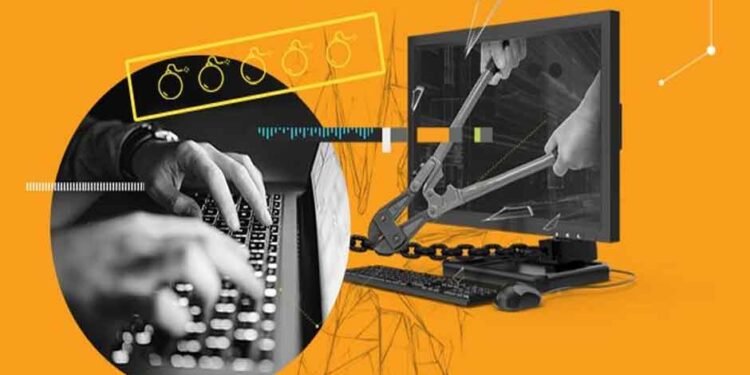As the world continues to digitize and experience further advancements in information technology, cybercrime is evolving to become more sophisticated. The data companies’ stores are often valuable commodities and a common target of cyber attacks. These detrimental incidents are commonly referred to as security breaches.
The range of security breaches is vast and ever-evolving, from sophisticated hacking techniques to insider threats. Understanding the most common types of security incidents and implementing proactive strategies to mitigate risks are essential for safeguarding valuable assets and maintaining the trust of customers and stakeholders. Consult with Managed IT Services experts to prevent security breaches in your business.
This article will explore the types of security attacks and how to prevent security breaches.
8 Most Common Security Breaches
-
Ransomware
Ransomware entails the use of malicious software that encrypts the files of the target, making them inaccessible until a ransom is paid. To avoid falling victim to ransomware, it is essential to regularly update your operating system and software, as these updates often include patches for vulnerabilities that hackers can exploit.
In addition, be cautious when clicking on links or opening email attachments, as these can be sources of ransomware infections. It is also recommended to regularly back up your files to an external device or cloud storage service so that if you fall victim to a ransomware attack, you can restore your files without paying the ransom.
-
Data Breaches
Data breaches are one of the most common types of security breach that organizations face today. A data breach occurs when unauthorized individuals gain access to sensitive or confidential information, such as personal or financial data. It can have severe consequences for businesses, including financial loss, reputational damage, and legal ramifications.
Organizations should implement robust security measures, such as encryption, firewalls, and secure passwords, to avoid data breaches. Regularly updating software and systems, conducting employee training on cybersecurity best practices, and monitoring network activity can also help prevent data breaches. With cybersecurity incident response planning, organizations can quickly address and mitigate the impact of a data breach if one does occur.
-
Insider Threats
Insider threats are one of the most common kinds of security breaches that organizations face. These threats occur when individuals within the organization, such as employees or contractors, intentionally or unintentionally compromise sensitive information or systems.
Organizations need to implement proper security measures to mitigate the risk of insider threats. This includes conducting thorough background checks on employees, implementing access controls and monitoring systems, and providing regular training on security best practices. By being proactive and vigilant, organizations can significantly reduce the chances of falling victim to insider threats and protect their valuable data from unauthorized access or misuse
-
Phishing Attacks
Phishing attacks are a widespread security threat that affects businesses. These attacks typically involve the use of fraudulent emails or websites to deceive victims into providing sensitive information such as login credentials, credit card details, or social security numbers. It is crucial to remain vigilant and cautious when dealing with unsolicited emails or suspicious websites to avoid falling prey to phishing scams.
To mitigate the risk of falling prey to a phishing attack, it is imperative to exercise caution when interacting with links or opening attachments in emails, particularly those that are unexpected or originate from unfamiliar senders. Moreover, it is advisable to update and use strong passwords regularly, enable multi-factor authentication whenever possible, and educate your employees about the signs of a phishing attempt.
-
Malware Attacks
One of the most common types of security attacks is malware attacks. Malware, short for malicious software, refers to any software designed to harm or exploit computer systems and networks. Malware can take many forms, including viruses, worms, Trojans, ransomware, and spyware. These attacks can have devastating consequences for individuals and businesses, including data theft, financial loss, and damage to reputation.
To avoid malware attacks, it is essential to keep your operating system and software up to date with the latest security patches, use strong and unique passwords for all accounts, be cautious when clicking on links or downloading attachments from unfamiliar sources, and regularly back up your data.
-
Social Engineering Attacks
Social engineering attacks are one of the most common security breaches faced by individuals and organizations. These attacks involve manipulating people into divulging sensitive information or performing actions compromising security. Social engineering attackers often rely on psychological manipulation techniques, such as impersonating someone in a position of authority or creating a sense of urgency.
To avoid falling victim to social engineering attacks, being vigilant and skeptical of unsolicited requests for information or actions is essential. Implementing strong authentication measures, providing regular security awareness training, and establishing clear protocols for handling sensitive information can also help mitigate the risk of social engineering attacks.
-
Man-in-the-Middle (MitM) Attacks
Man-in-the-middle (MitM) attacks are one of the most common security breaches individuals and organizations face. In a Man-in-the-Middle (MitM) attack, a malicious third party intercepts communication between two parties, thereby gaining the ability to potentially eavesdrop on sensitive information or manipulate the data being transmitted. This breach in communication security poses significant risks to the confidentiality and integrity of the exchanged data. It is essential to take several precautions to avoid falling victim to a MitM attack.
First, always ensure you connect to secure networks, such as encrypted Wi-Fi connections or virtual private networks (VPNs). Exercise caution when clicking on links or downloading attachments from unknown sources, as these actions could potentially be used to launch a Man-in-the-Middle (MitM) attack. Finally, regularly update your devices and software with the latest security patches to protect against known vulnerabilities that attackers may exploit.
-
Denial of Service / Distributed Denial of Service Attacks
Denial of Service (DoS) and Distributed Denial of Service (DDoS) attacks are two of the most common types of security breaches that organizations face. In a DoS attack, the attacker floods a target system with requests or traffic, overwhelming its resources and causing it to become unavailable to legitimate users. DDoS attacks are similar but involve multiple computers or devices, often forming a botnet, to launch the attack.
Organizations should implement robust network security measures such as firewalls, intrusion detection systems, and load balancers to avoid these types of attacks. It is also crucial to regularly update and patch software and systems to address any vulnerabilities that attackers may exploit. Furthermore, having a response plan in place can help mitigate the impact of an attack and minimize downtime.
The Bottom Line
Safeguarding against security breaches requires a multi-faceted approach that combines proactive measures, ongoing education, and the implementation of robust security protocols. Organizations can better protect their defenses by understanding the most common types of security breaches—ranging from phishing attacks and malware infections to data breaches and insider threats. Regular updates to security systems, employee training, and a culture of security awareness are essential components in mitigating the risks associated with cyber threats. By staying informed and adopting a proactive stance towards security, businesses can significantly reduce the chances of falling victim to security breaches and better protect their valuable assets and sensitive information.












